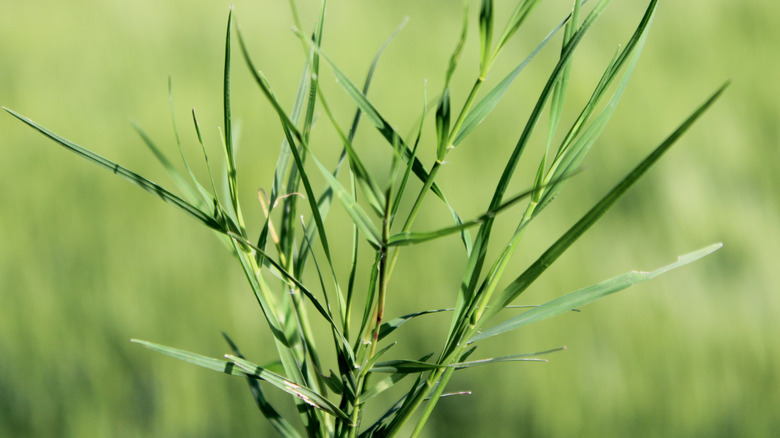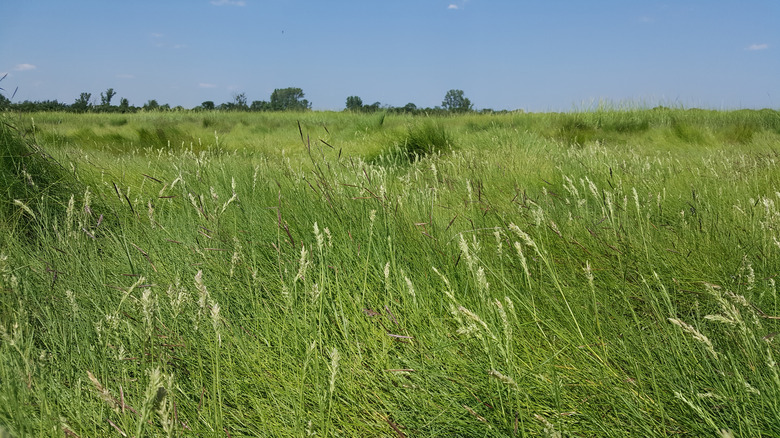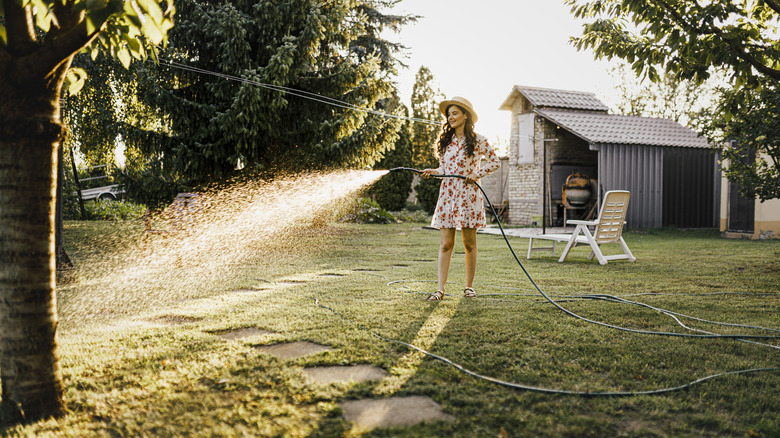What Is Saltgrass And Can You Grow It Near Your Home?
Saltgrass is a lot of things: an important habitat, a lawn weed, and a helpful tool in wetland restoration and erosion control. With these mixed characteristics, it's hard to know whether it's something you should plant near your home. Saltgrass goes by a handful of names. Also known as Distichlis spicata, inland saltgrass, spike grass, alkali grass and more, this tough, perennial plant may be the answer to your lawn woes in dry climates. For areas with more moisture, saltgrass can be a godsend for habitat rehabilitation. But in sprawling plush bluegrass lawns, saltgrass is much less welcome.
Should you grow this multifaceted grass near your home? Saltgrass can be a good lawn solution in some places and great for aquatic plants in others. The trick appears to be matching your needs with where you live — be it a suburban versus rural situation, or a regional question. Depending on your goals, now could be the best time to plant drought-tolerant plants like saltgrass.
What are the benefits and drawbacks of growing saltgrass?
Do you need to prevent erosion on a sloped lawn? Saltgrass has been very effective in controlling erosion. If your land includes hillsides that struggle to maintain plant life and soil integrity, saltgrass can be a smart solution. It's cold-tolerant down to 0 degrees Fahrenheit and maintains its vigor in high temperatures that send Kentucky bluegrass into dormancy. If you're lucky enough to have property with a pond, marsh, or creek, saltgrass is ideal for supporting animal life along the water's edge. The grass provides habitat and food for many species, from bugs to birds, including the endangered Florida salt marsh vole.
Spiky and tough, saltgrass is not the most inviting plant to feel under bare feet. It's not considered an invasive plant by the Center for Invasive Species and Ecosystem Health. However, many lawn lovers and landowners view saltgrass as an unwelcome weed. It can be harder to control than most grasses, showing resistance to many commercial pesticides and hand removal as well. It spreads quickly through an underground stem system (rhizomes), and trying to remove plants by hand can actually increase spreading. Plus, the pesticides developed to control saltgrass can damage other plants nearby and harm pollinators.
Should you plant saltgrass near your home?
Water is a vital element of lawn maintenance. In much of the American west, water is like gold. It's scarce and coveted, and dousing a Kentucky bluegrass lawn can be frivolous or even illegal. Jessica Taylor Price of Northeastern University reports that turf grass soaks up around 75 percent of the average American household's water. That's leading Americans to reconsider their traditional turf. On the other hand, growing an unconventional lawn can break homeowner association rules in some neighborhoods.
Whether you plant saltgrass or not should come down to where you live and what you want out of the grass. Saltgrass grows well in salty soils where other grasses won't grow. If you live in such a zone, saltgrass can be an option. Saltgrass also requires much less water than other sod varieties; it's slow growing and stays green throughout the season in the mountain west. However, it does best when kept moist, and relegating a precious resource to a lawn, even if it is less water than needed for other grass types, may not be an option for your home. But if you crave a green space for kids and pups to play, saltgrass could be your less-thirsty answer.


